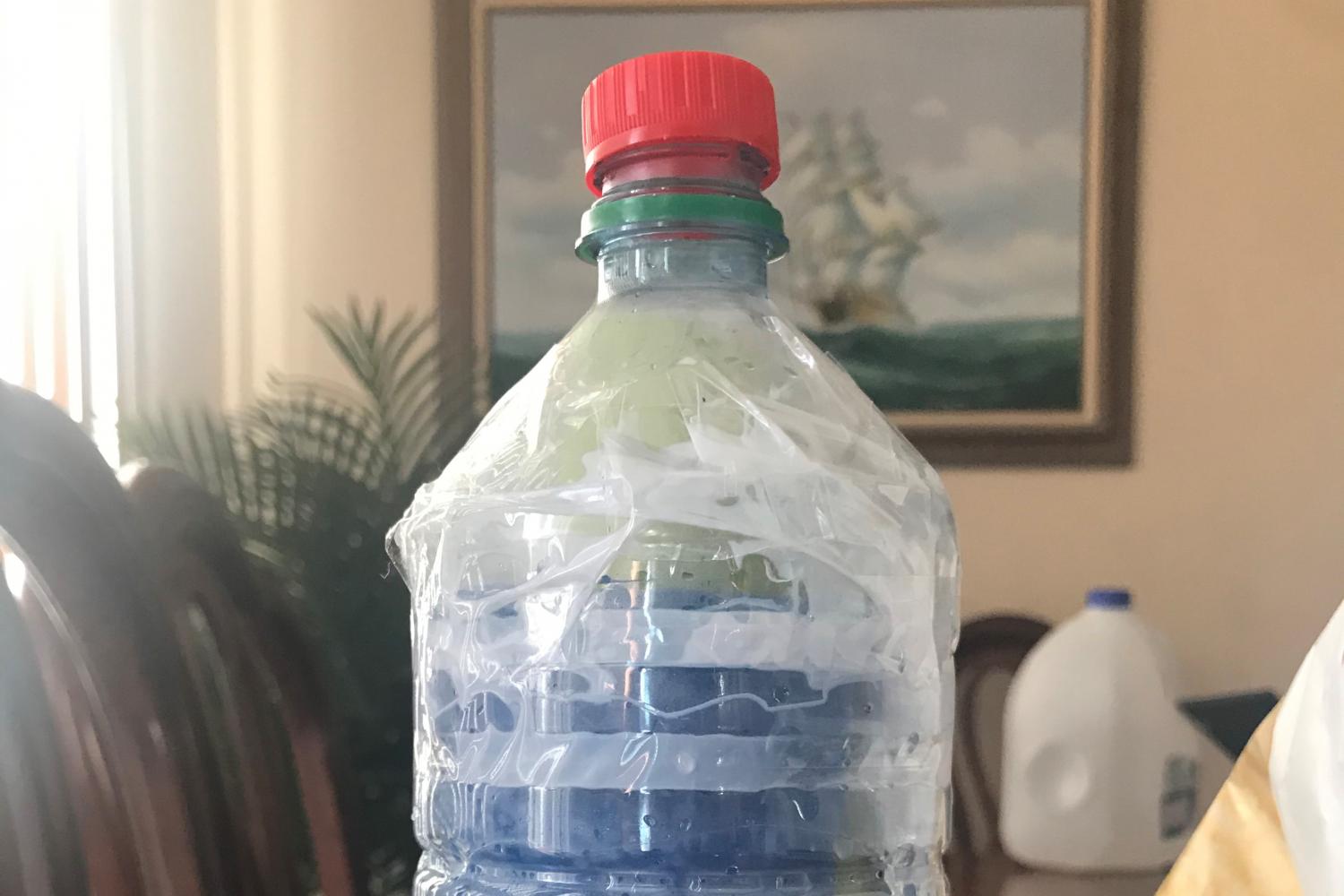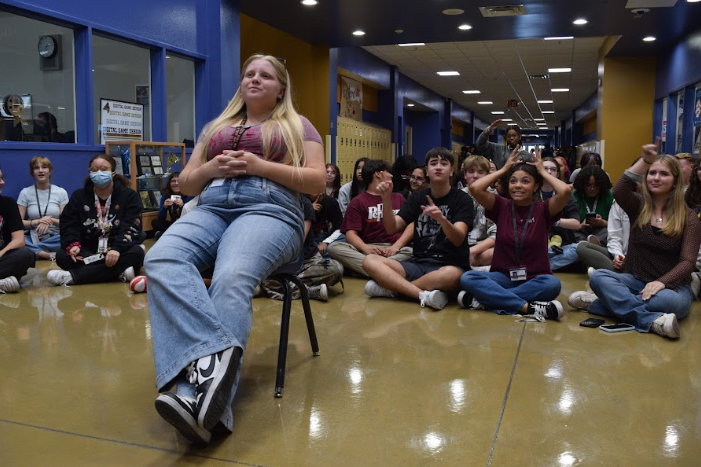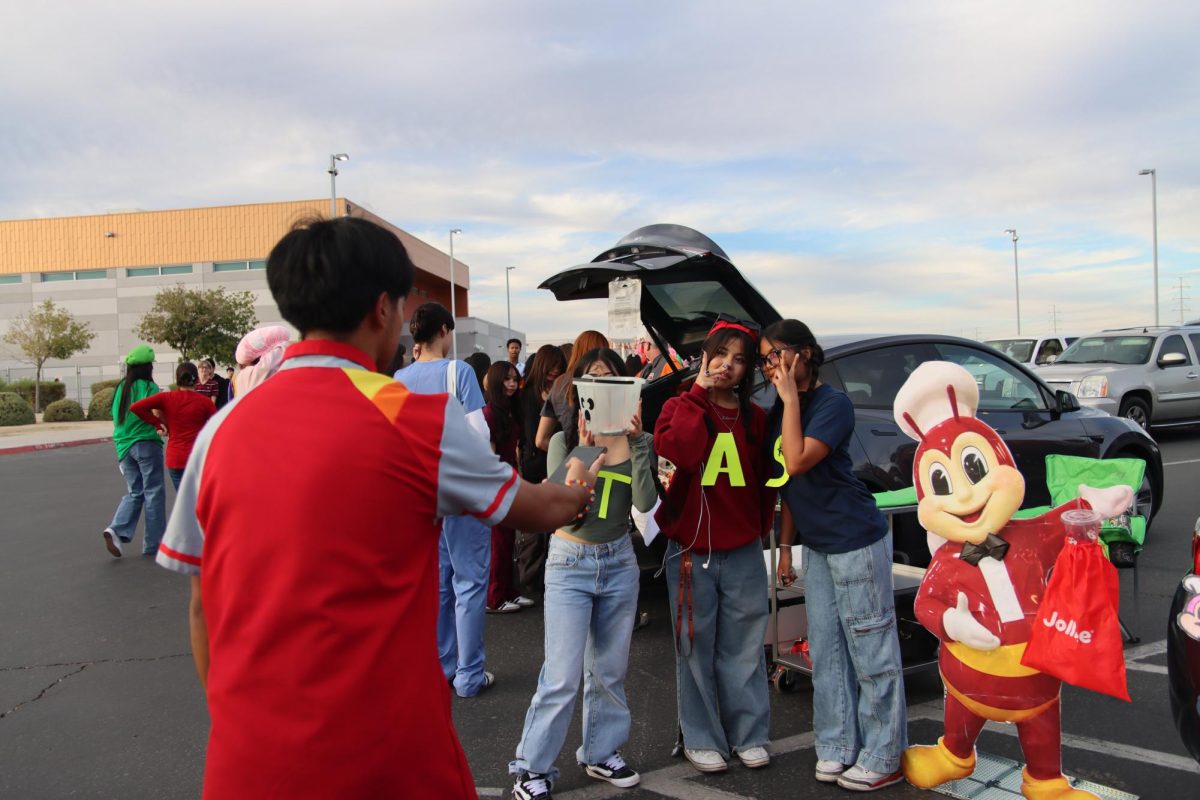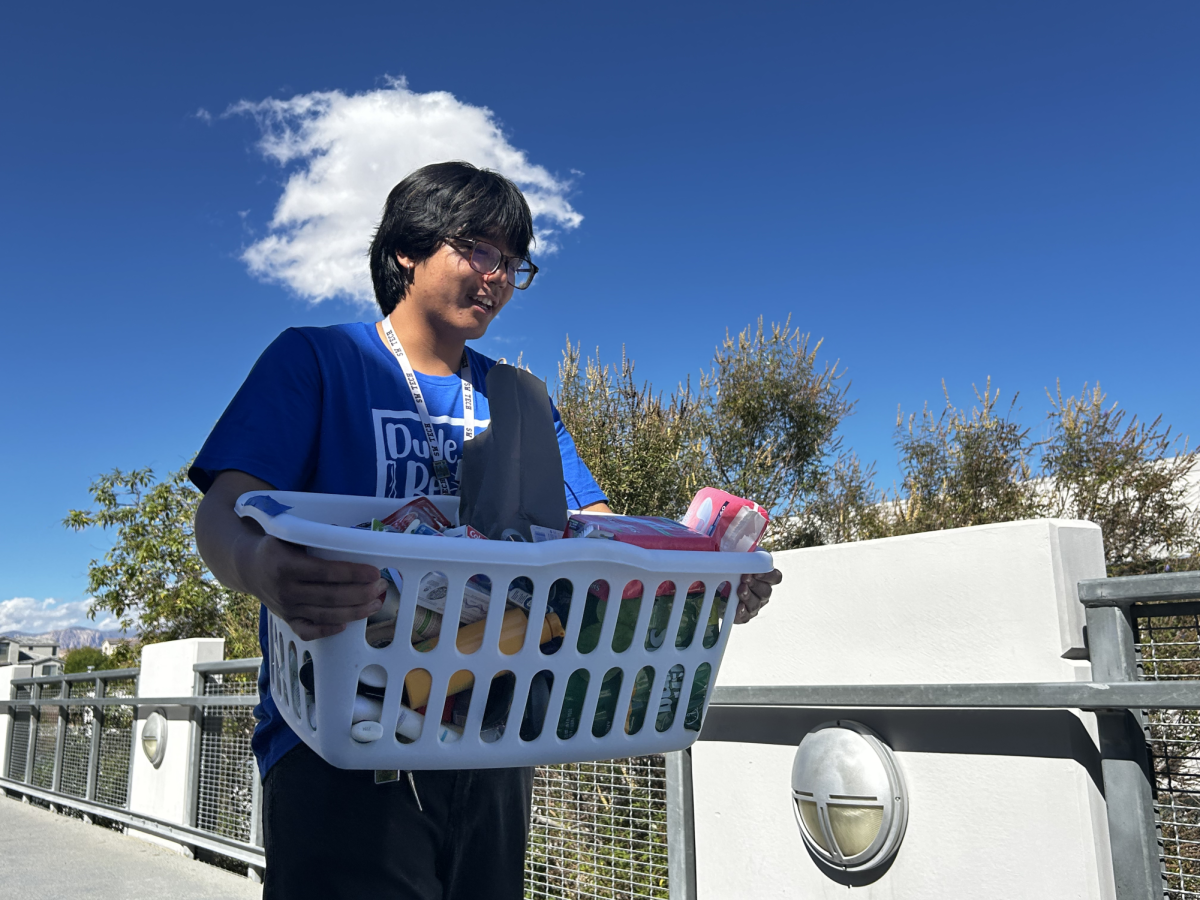After having spent a week learning about ways thermal energy can spread, Jennifer Conder’s Chemistry class created devices that mimic hydro flasks to keep water warm. Using a thermometer, students continually took the temperature of their device and a hydro flask for five minutes or more to compare how well they stored the heat of water.
“This goes hand and hand with science and engineering practices,” Conder said. “You’ve done research, you’ve looked at insulators and you are designing a device that can prevent heat loss. You are having to refine your device to solve problems which is part of being an engineer.”
This project was one of the first labs to be done this year, despite the difficulties, using materials students had at home, while in-person learners utilized school supplies.
“This project was different from the rest. Rather than simply creating a presentation on our computers, we constructed our own makeshift thermos and measured its water temperatures,” sophomore Anika Aller said. “I liked that we got to do something hands on this year, despite the fact we’re mainly attending online school.”
Using their creativity to figure out whether their devices would work or not, many students felt the process of testing and refining added a sense of anticipation.
“This project was fun to do,” sophomore Isabel Gomez said. “I was really excited to see if it would work. I love getting out of the house to get the materials and testing my creation. For my device, I got a plastic bottle and cut it in half. Then I got a glass bottle and put it inside the plastic bottle.”
Students were graded on their ability to refine the device, including multiple samples of data and more as described in the rubric. Many students struggled when it came to ensuring that their water did not lose more than three degrees.
“Ms. Conder asked us to create a device that kept water warm between a three degree difference,” sophomore Malorie Schwartz said. “At the start of the project, it was difficult for me to build a device that kept water within a 3 degree difference. My original design included styrofoam, because during my research, I learned that it was a good insulator. But, I decided to alter my design to use foam instead. After testing, my design proved to be successful. This project helped me understand the purpose of conduction, convection, radiation, and insulation.”
Sophomores took away many useful skills such as time management, flexibility and patience in creating their individual hydro-flasks for this project. All of which are vital abilities that will be needed for the next unit in the class about nuclear half-life.
I thought that the hydro flask project was really neat,” sophomore Daphne Huang said. “I learned through this project that doing labs on your own is a very trial and error kind of situation. So in doing this project, it helped me learn how to be adaptable under time & stress restrictions.”



![Looking at the board, former BSU secretary Christina Altaye begins to prepare for BSU’s second year of Club Feud. This year, “Are You Smarter Than a Ninth Grader?” will be replacing this event. “I think it’s a fun change [to Club Feud],” BSU Activities Director Hellen Beyene said. “[I think] it’s always fun to do something new and different.”](https://southwestshadow.com/wp-content/uploads/2025/10/Screenshot-2025-09-29-11.06.43.png)



![Displaying a QR code for students to scan, the flyer allows students to sign up and learn about their desired colleges as they visit throughout the school year. Many schools have had additional presentations for students to learn more about what they offer. “For me, I’m interested in criminal justice,” junior Zion Jefferson said. “I know that UNLV and Nevada State University have this major. But, [the college fair] is going to be beneficial, so I can see what other schools offer as well.”](https://southwestshadow.com/wp-content/uploads/2025/10/IMG_2721-1200x900.jpg)
![Working in the Student Success Office, Attendance Secretary Lordis Depiazza inputs a student’s absence excuse note. Students are required to bring an excuse note to the attendance office within three days of any absence. “Reminding students that being in school is important because it reflects towards your grades and being able to do any activities with the school,” Depiazza said. “[It] seems to get the students' attention about wanting to be in school.”](https://southwestshadow.com/wp-content/uploads/2025/10/IMG_8313-1200x800.jpg)